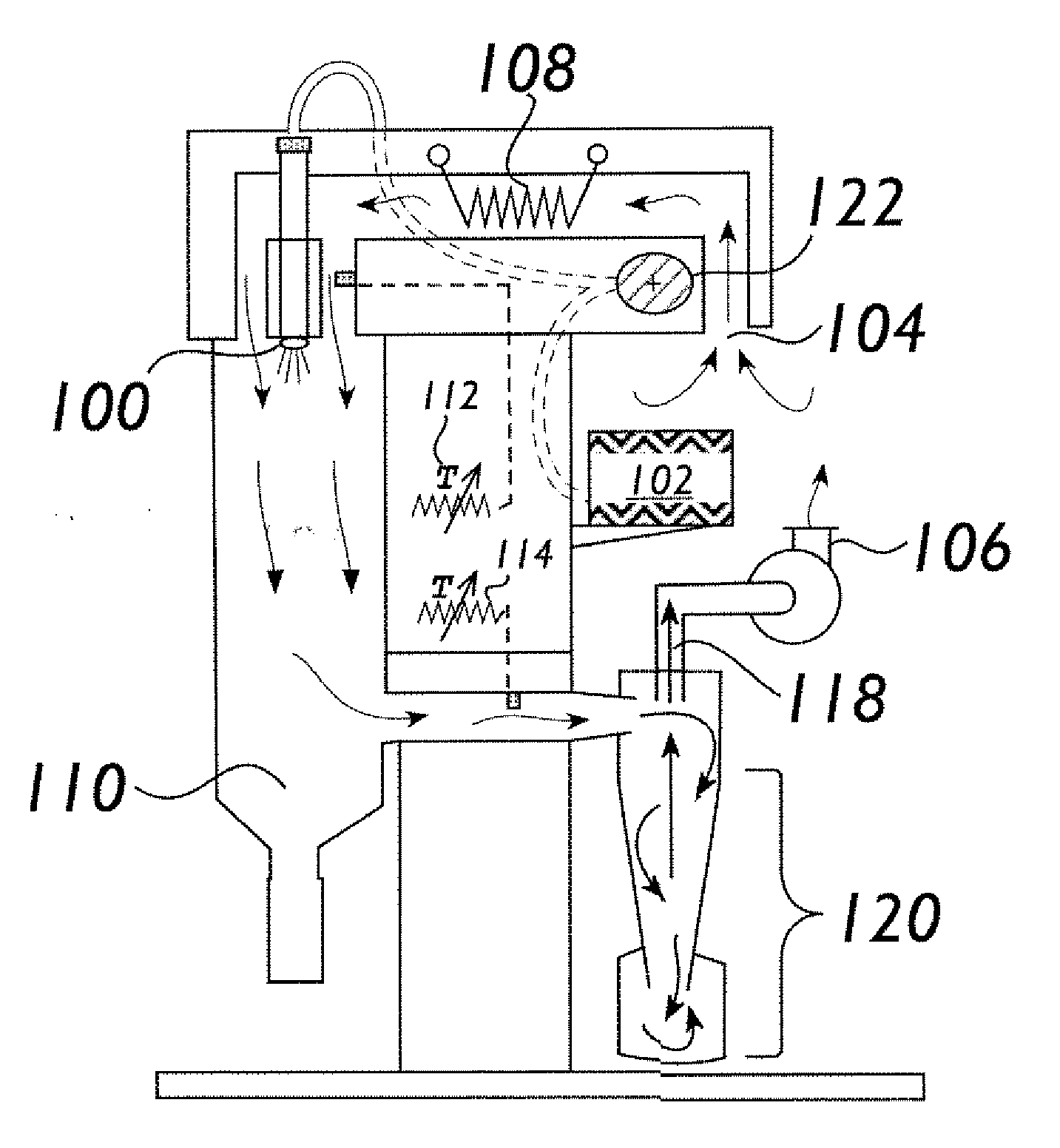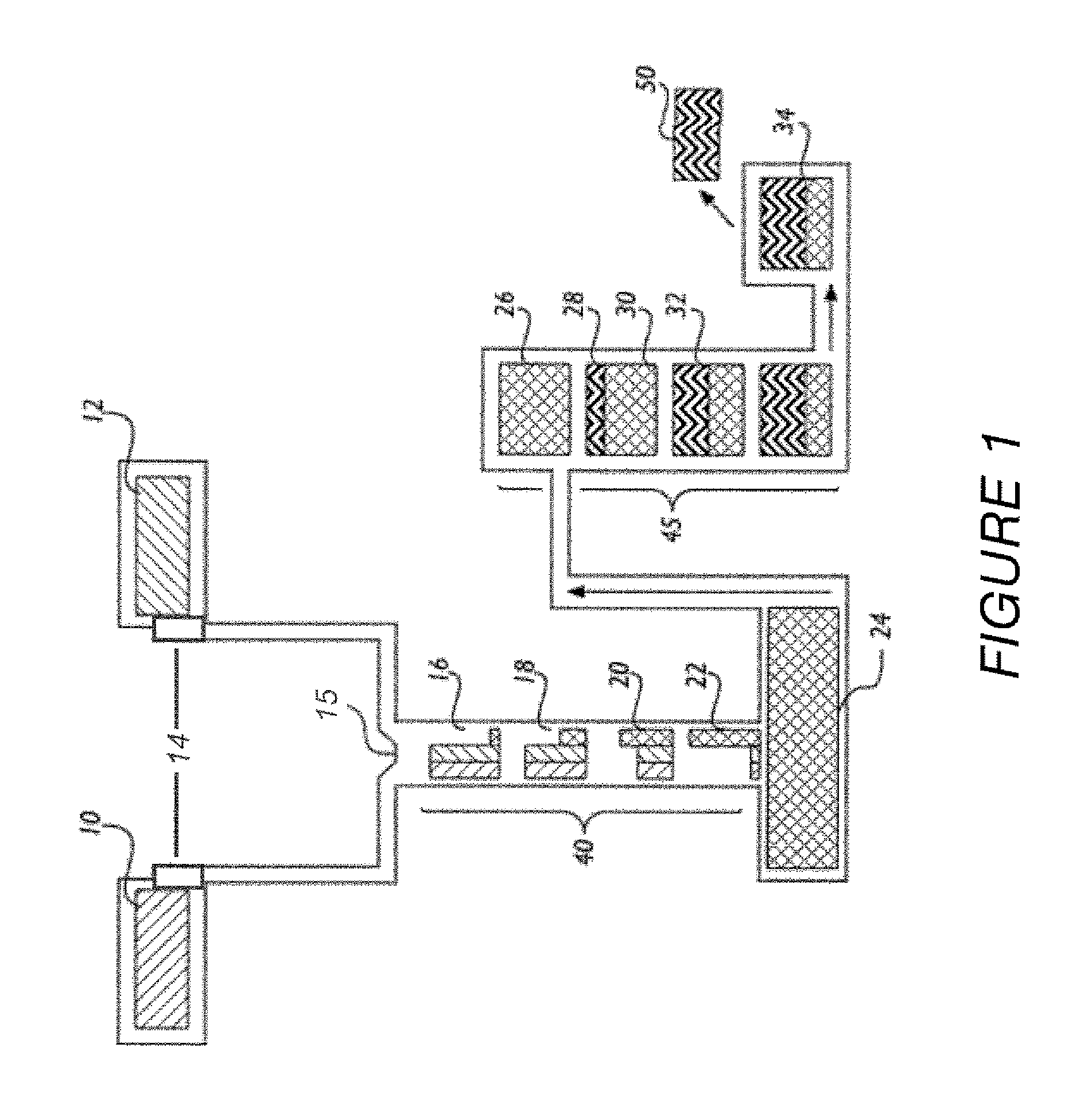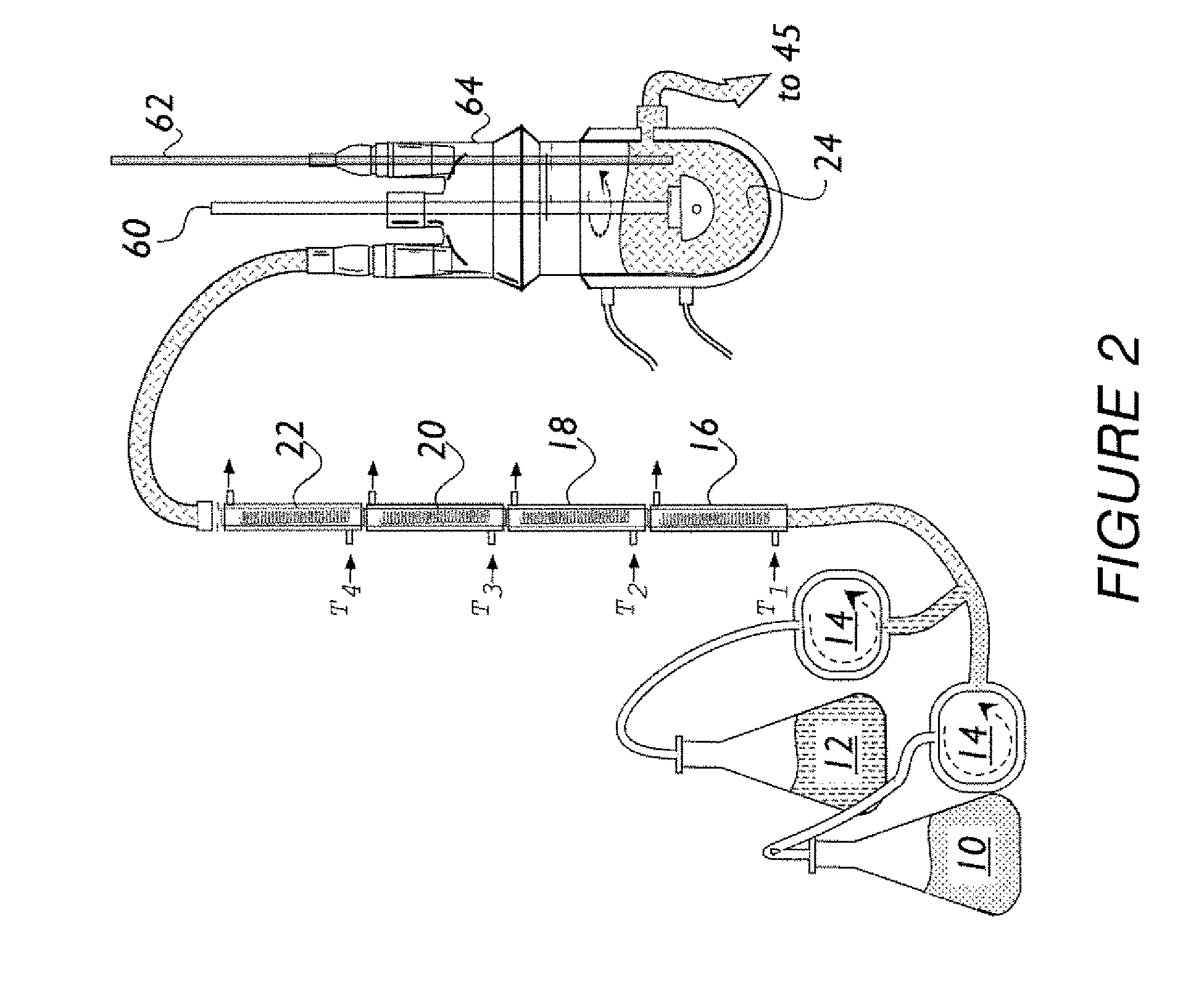Novel process for the preparation of sodium gamma-hydroxybutyrate
a technology of sodium gamma hydroxybutyrate and sodium gamma hydroxybutyrate, which is applied in the preparation of carboxylic compounds, biocide, organic chemistry, etc., can solve the problems of short residence time inherent in continuous processing, not being able to achieve the method, and not providing a superior method of producing naghb
- Summary
- Abstract
- Description
- Claims
- Application Information
AI Technical Summary
Benefits of technology
Problems solved by technology
Method used
Image
Examples
examples
[0058]Standard Batch Process (Comparative).
[0059]The prior art teaches that a mixture of 16.3 g of gamma-butyrolactone (0.19 eq, 86.1 MW) and 7.4 g of sodium hydroxide (0.19 eq, 40 MW) dissolved in 30 cc of water was boiled under a reflux condenser for about three hours. At the end of this time more water was added to dissolve the salt and the solution was filtered and evaporated to dryness under reduced pressure. The salt was recrystallized from alcohol. The yield was 11.5 g (40% of the theoretical amount). (JACS 1929, v. 51, p. 260).
[0060]Preparation of One-Kilogram of NaGHB as an Aqueous Concentrate.
[0061]The procedure described below was used to prepare a one-kilogram sample of NaGHB as an aqueous concentrate.
[0062]The following solutions were prepared as feedstock for the continuous reactor: GBL Feedstock Solution—GBL (751.0 g, about 670.5 mL, 8.723 mol) was diluted to 1200 mL with reagent grade water and mixed until homogeneous (clear, colorless); NaOH Feedstock Solution—NaOH ...
PUM
| Property | Measurement | Unit |
|---|---|---|
| Temperature | aaaaa | aaaaa |
| Temperature | aaaaa | aaaaa |
| Temperature | aaaaa | aaaaa |
Abstract
Description
Claims
Application Information
 Login to View More
Login to View More - R&D
- Intellectual Property
- Life Sciences
- Materials
- Tech Scout
- Unparalleled Data Quality
- Higher Quality Content
- 60% Fewer Hallucinations
Browse by: Latest US Patents, China's latest patents, Technical Efficacy Thesaurus, Application Domain, Technology Topic, Popular Technical Reports.
© 2025 PatSnap. All rights reserved.Legal|Privacy policy|Modern Slavery Act Transparency Statement|Sitemap|About US| Contact US: help@patsnap.com



